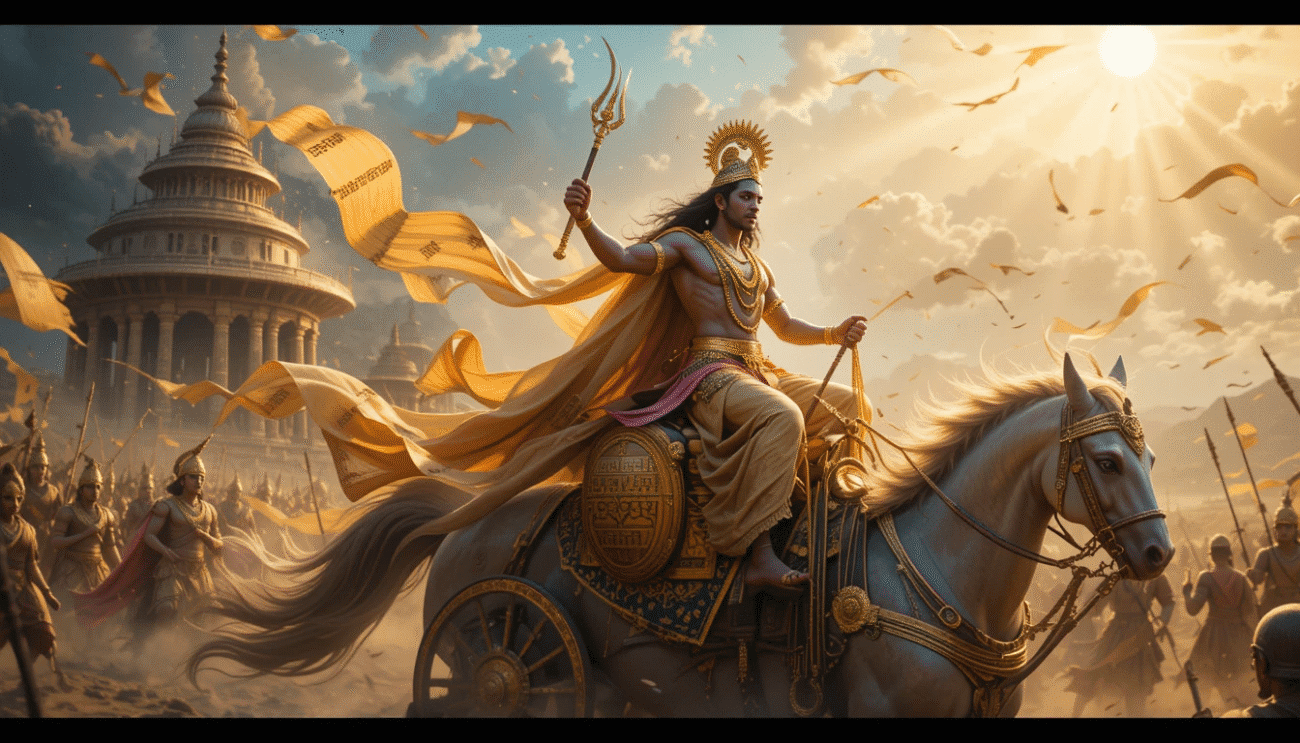Are you searching for clarity, direction, or peace of mind? In a world filled with noise and distraction, the Bhagavad Gita offers timeless spiritual guidance that transcends cultures and centuries. This sacred Hindu scripture, embedded within the Indian epic Mahabharata, is more than just a religious text—it’s a blueprint for life.
The summary of the Gita helps distill its complex philosophies into accessible teachings on duty, action, self-realization, and divine connection. Whether you’re a seeker of truth, a student of philosophy, or simply curious about Eastern wisdom, this article is for you.
In this article you’ll discover:
- The core message of the Bhagavad Gita
- How its teachings apply to your modern life
- Key lessons on action, detachment, and inner peace
- FAQs answered clearly with practical insights
Table of Contents
What Is the Bhagavad Gita?
The Bhagavad Gita, often referred to as “The Gita,” is a 700-verse Hindu scripture that forms part of the Mahabharata. It presents a profound spiritual dialogue between Lord Krishna and the warrior prince Arjuna.
The Divine Conversation
The Gita begins on the eve of a great war. Arjuna, confused and morally troubled, seeks guidance from Krishna. What unfolds is a philosophical and spiritual discourse that addresses the dilemmas of life, ethics, and duty.
- Sanskrit Origin: “Bhagavad Gita” means “The Song of God.”
- Structure: It comprises 18 chapters grouped into three major themes: Karma Yoga, Bhakti Yoga, and Jnana Yoga.
“Whenever dharma declines and the purpose of life is forgotten, I manifest myself on earth.” – Lord Krishna (Gita 4.7)
The Context and Setting of the Gita
To understand the summary of the Gita, we must grasp its unique setting. The teachings are delivered on the Kurukshetra battlefield, just before the war between the Pandavas and the Kauravas.
A Symbolic Battlefield
The battlefield represents more than a physical war—it symbolizes the inner struggle each person faces. Arjuna’s despair reflects our own emotional and moral conflicts in life.
Krishna urges Arjuna to rise above his fears and perform his duty without attachment to results—a concept central to the Gita’s philosophy.
- Arjuna: Represents the confused self.
- Krishna: Embodies the higher self or divine guide.
This context makes the Gita timeless, speaking to anyone at a crossroads in life.
Core Teachings in the Summary of the Gita
The summary of the Gita revolves around five major concepts that illuminate life’s deeper truths. These teachings form the foundation of the Gita’s enduring relevance.
1. Dharma (Righteous Duty)
Each individual has a unique purpose. Performing one’s duty with integrity—without attachment to outcomes—is central to spiritual growth.
2. Karma Yoga (Path of Selfless Action)
“Do your duty, but do not concern yourself with the fruits of your actions.” This defines Karma Yoga—acting without selfish desires or ego.
3. Bhakti Yoga (Path of Devotion)
Krishna emphasizes the power of surrender and love. Devotion to the divine brings peace and liberation.
4. Jnana Yoga (Path of Knowledge)
The seeker must distinguish between the real (soul) and the unreal (body). Through self-knowledge, one attains freedom from illusion.
5. The Eternal Soul (Atman)
The Gita teaches that the soul is immortal. Birth and death are mere transitions—our essence remains unchanged.
“You have the right to work, but never to the fruit of work.” – Gita 2.47
Modern Relevance of Gita’s Wisdom
Though written over 5,000 years ago, the summary of the Gita offers solutions to 21st-century challenges—be it stress, decision-making, or identity crises.
Why the Gita Still Matters
- Mental Clarity: Helps in navigating life’s uncertainties with courage.
- Emotional Balance: Encourages detachment and inner peace.
- Self-Mastery: Offers tools to rise above ego and impulses.
Global Influence
From Mahatma Gandhi to Carl Jung and Albert Einstein, many have drawn inspiration from the Gita’s teachings. Today, it is taught in universities and leadership courses worldwide.
Its message? Be in the world, but not of it. Act, but don’t be bound. Love, but don’t expect. Serve, but don’t seek reward.
Frequently Asked Questions
Conclusion
In summary, the Bhagavad Gita is a guide to living a life of purpose, courage, and peace. Its teachings remain timeless because they speak to the heart of every human being, across cultures and generations.
By understanding the summary of the Gita, you gain insights into your soul, your responsibilities, and your path to inner joy.
Ready to explore the Gita more deeply? Start with one verse a day, and let its wisdom illuminate your journey.
Now it’s your turn—what part of the Gita speaks most to you? Share your thoughts and reflections in the comments below.
